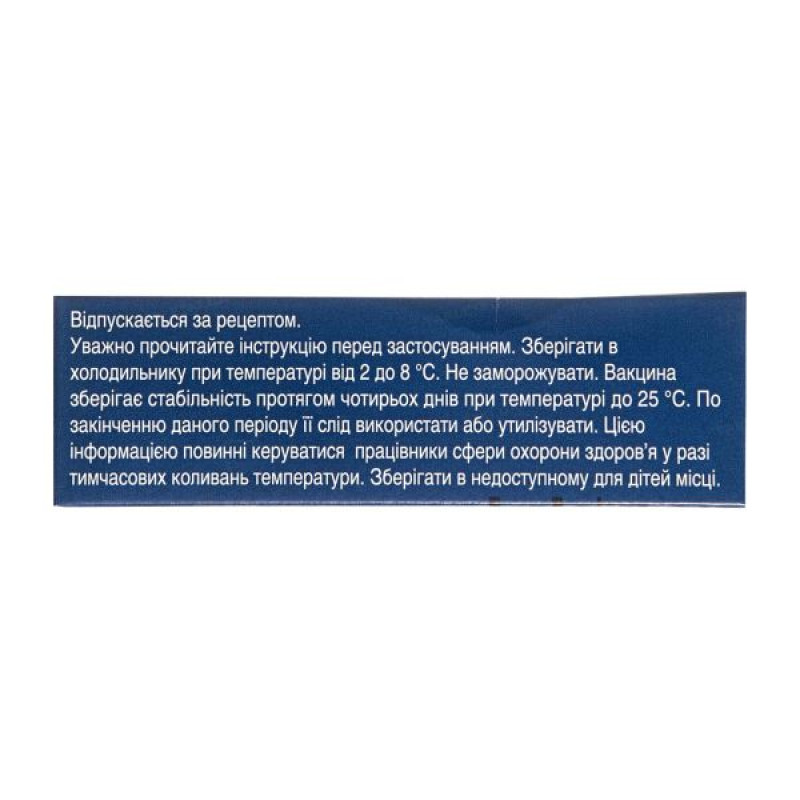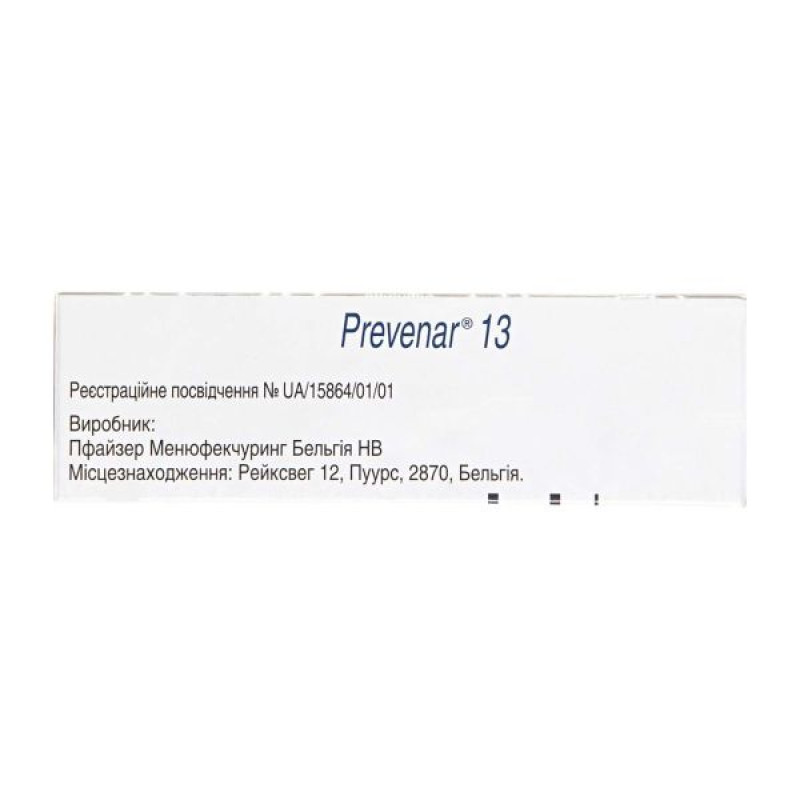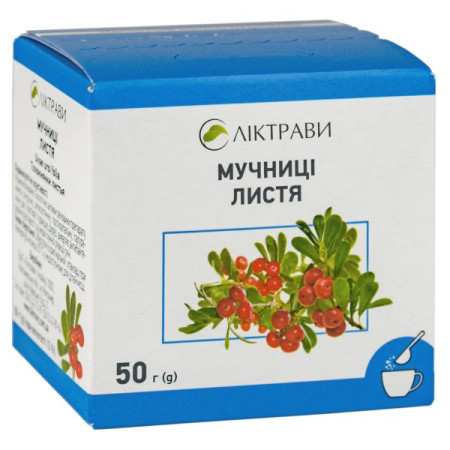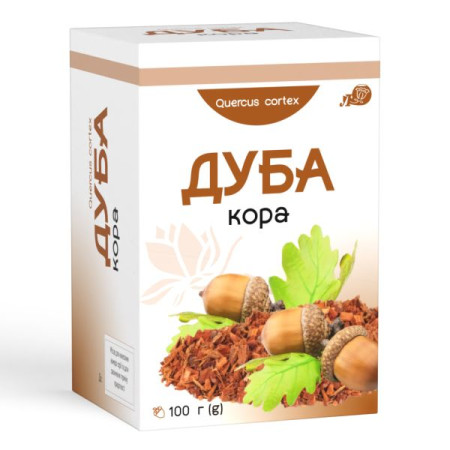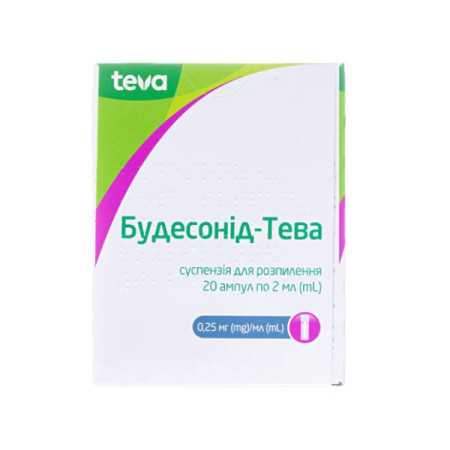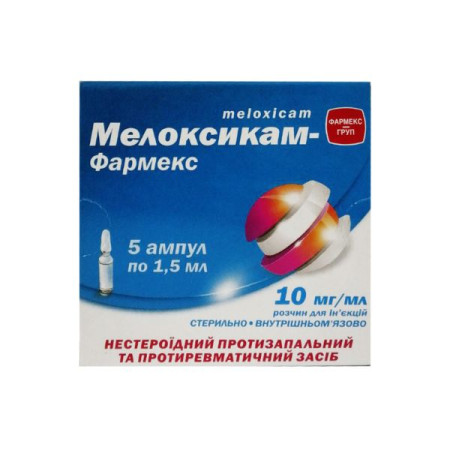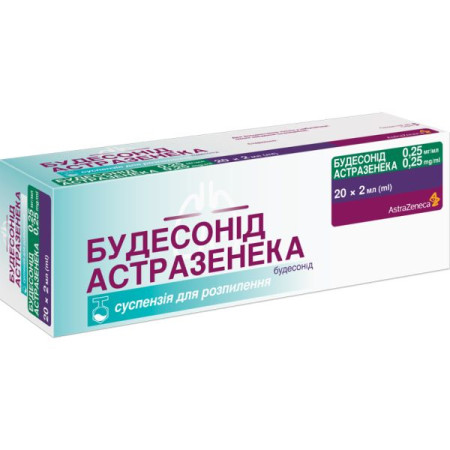Prevenar 13 vaccine pneumococcal suspension for injection 1 dose syringe 0.5 ml with needle No. 1

Instructions Prevenar 13 vaccine pneumococcal suspension for injection 1 dose 0.5 ml syringe with needle No. 1
Composition
active ingredients: pneumococcal polysaccharides of serotypes 1, 3, 4, 5, 6A, 6B, 7F, 9V, 14, 19A, 19F and 23F, oligosaccharide of serotype 18C, carrier protein CRM197;
One dose (0.5 ml) contains:
| pneumococcal polysaccharide serotype 1* 2.2 μg |
| pneumococcal polysaccharide serotype 3* 2.2 μg |
| pneumococcal polysaccharide serotype 4* 2.2 μg |
| pneumococcal polysaccharide serotype 5* 2.2 μg |
| pneumococcal polysaccharide serotype 6A* 2.2 μg |
| pneumococcal polysaccharide serotype 6B* 4.4 μg |
| pneumococcal polysaccharide serotype 7F* 2.2 μg |
| pneumococcal polysaccharide serotype 9V* 2.2 μg |
| pneumococcal polysaccharide serotype 14* 2.2 μg |
| pneumococcal oligosaccharide serotype 18C* 2.2 μg |
| pneumococcal polysaccharide serotype 19A* 2.2 μg |
| pneumococcal polysaccharide serotype 19F* 2.2 μg |
| pneumococcal polysaccharide serotype 23F* 2.2 μg |
CRM197 carrier protein 32 mcg *Conjugated to CRM197 carrier protein and adsorbed on aluminum phosphate (0.125 mg aluminum). |
Excipients: aluminum phosphate, sodium chloride, water for injection, polysorbate 80, butanedioic acid.
Dosage form
Suspension for injection.
Main physicochemical properties: homogeneous white suspension.
Pharmacotherapeutic group
Antibacterial vaccines. Pneumococcal polysaccharide purified antigen conjugated. ATX code J07A L02.
Pharmacological properties
Pharmacodynamics
Prevenar® 13 contains 7 pneumococcal capsular polysaccharides identical to those in Prevenar (4, 6B, 9V, 14, 18C, 19F, 23F) and 6 additional polysaccharides (1, 3, 5, 6A, 7F, 19A), all conjugated to the carrier protein CRM197.
Immune responses after a primary three-dose course of infant vaccination.
Clinical trials using several vaccination schedules have been conducted in several European countries and the USA, including two randomized equivalence studies (conducted in Germany using primary courses at 2-3-4 months [006] and in the USA using primary courses at 2-4-6 months [004]).
Prevenar® 13 induced functional antibodies to all 13 serotypes in studies 004 and 006. For the 7 common serotypes, there was no difference between groups in the proportion of patients with opsonophagocytic antibody titers (OPT titers) ≥ 1:8. One month after the primary vaccination course with Prevenar® 13, >96% and >90% of patients had OPT titers ≥ 1:8 for each of the seven common serotypes in studies 006 and 004, respectively.
One month after the primary vaccination course, Prevenar® 13 induced OFR titers ≥ 1:8 for all 6 additional serotypes in 91.4-100% of vaccinated subjects in both studies. The geometric mean OFR titers for serotypes 1, 3, and 5 were lower than the titers for each of the remaining additional serotypes; the clinical significance of this observation for protective efficacy is unknown.
Immune responses after a primary two-dose course of infant vaccination.
Immunogenicity of the product after administration of two doses to infants was confirmed in four studies. The percentage of infants in whom IgG concentrations to pneumococcal capsular polysaccharide reached ≥ 0.35 μg/ml one month after the second dose was 79.6-98.5% for 11 of the 13 vaccine serotypes. In all studies using the 2-4 month schedule, the percentage of infants in whom the threshold antibody concentration (0.35 μg/ml) was reached for serotypes 6B (27.9-57.3%) and 23F (55.8-68.1%) was lower than in the study using the 3-5 month schedule, which obtained values of 58.4% for serotype 6B and 68.6% for serotype 23F. After booster vaccination, all vaccine serotypes, including 6B and 23F, elicited immune responses consistent with an effective two-dose primary immunization. In a study conducted in the United Kingdom, the induction of functional antibodies as a result of opsonophagocytic reactions (OPRs) was comparable for all serotypes, including 6B and 23F, with Prevenar and Prevenar® 13 after the primary vaccination course at 2 and 4 months of age and after the booster at 12 months of age. Among subjects receiving Prevenar® 13, the proportion of subjects with OPR titers ≥ 1:8 was at least 87% after the early vaccination course and at least 93% after the booster. The geometric mean OPR titers for serotypes 1, 3, and 5 were lower than the titers for each of the other additional serotypes; the clinical significance of this observation is unknown.
After booster vaccination, antibody concentrations to all 13 serotypes increased compared to levels observed before the booster dose. After booster vaccination, antibody concentrations to 12 serotypes were higher than after the primary vaccination course at an early age. These observations are consistent with the results of effective primary immunization (induction of immunological memory). The immune response to serotype 3 after booster vaccination did not exceed the levels observed after the primary vaccination course at an early age; the clinical relevance of this observation with respect to the induction of immune memory to serotype 3 is unknown.
Antibody development after booster vaccination to all 13 vaccine serotypes was comparable with primary vaccination with both two and three doses.
In children aged 7 months to 5 years, age-appropriate catch-up immunization resulted in IgG antibodies to the capsular polysaccharide of each of the 13 serotypes in amounts that were at least comparable to those observed after a primary three-dose immunization course in infants.
Antibody persistence and immunological memory were evaluated in a study involving healthy children who received a single dose of Prevenar® 13 at least 2 years after previous immunization with either 4 doses of Prevenar, a 3-dose infant series of Prevenar® followed by Prevenar® 13 at 12 months of age, or 4 doses of Prevenar® 13.
A single dose of Prevenar® 13 in children aged approximately 3.4 years, regardless of previous vaccination history with Prevenar or Prevenar® 13, induced a robust humoral response to 7 common serotypes and 6 additional serotypes of Prevenar® 13.
Epidemiological surveillance data on the spread of pneumococcal infection obtained since the launch of the 7-valent Prevenar vaccine in 2000 have not demonstrated a decrease in immunity induced by Prevenar in early childhood over time.
Premature babies.
The safety and immunogenicity of Prevenar® 13, administered to children at 2, 3, 4 and 12 months of age, were evaluated in approximately 100 preterm infants (mean estimated gestational age (EGA) 31 weeks; range 26 to 36 weeks) compared with approximately 100 term infants (mean EGA 39 weeks; range 37 to 42 weeks).
The immune response in preterm and term infants was compared using the proportion of individuals who achieved IgG antibody concentrations to pneumococcal polysaccharides ≥ 0.35 μg/mL 1 month after the vaccination course, the approach used for comparisons of immunogenicity of Prevenar 13 to Prevenar based on WHO recommendations.
More than 85% of vaccinated infants achieved IgG antibody concentrations to pneumococcal polysaccharides ≥ 0.35 μg/mL 1 month after the vaccination course, except for serotypes 5 (71.7%), 6A (82.7%), and 6B (72.7%) in the preterm infant group. For these three serotypes, the proportion of subjects responding to vaccination was significantly lower in preterm infants than in term infants. Approximately 1 month after the dose in toddlers, the percentage of subjects achieving the same antibody threshold was >97% in each group, except for serotype 3 (71% in preterm infants and 79% in term infants).
Children (aged 12-59 months) fully immunized with Prevenar (7-valent) vaccine.
After a single dose of Prevenar® 13 to children (aged 12-59 months) who were considered fully immunized with Prevenar (7-valent) (2 or 3 doses of the primary series plus a booster injection), the proportion of subjects achieving plasma IgG levels ≥ 0.35 μg/ml and ORP titers ≥ 1:8 was at least 90%. However, 3 (serotypes 1, 5 and 6A) of the 6 additional serotypes demonstrated lower IgG geometric mean concentration (GMC) and ORP geometric mean antibody titer (GMT) values compared to children who had received at least one previous vaccination with Prevenar® 13. The clinical significance of the lower GMC and ORP titers is currently unknown.
Unvaccinated children (ages 12-23 months).
A study of Prevenar (7-valent) in unvaccinated children (12-23 months of age) showed that 2 doses were required for infants to achieve serum IgG concentrations for serotypes 6B and 23F similar to those induced by a 3-dose series of the vaccine.
Children and adolescents aged 5 to 17 years.
In an open-label study involving 592 healthy children and adolescents, including those with bronchial asthma (17.4%), who may be susceptible to pneumococcal infection, Prevenar® 13 produced an immune response to all 13 serotypes. A single dose of Prevenar® 13 was administered to children aged 5 to 10 years who had previously been vaccinated with at least 1 dose of Prevenar, as well as to children and adolescents aged 10 to 17 years who had never previously received a pneumococcal vaccine.
In children and adolescents aged 10 to 17 years, the OFR of the SGTA 1 month after vaccination was not inferior to the OFR of the geometric mean antibody titer in children aged 5 to 10 years for 12 of 13 serotypes (except serotype 3).
Immune response after subcutaneous administration.
The subcutaneous route of administration of Prevenar® 13 was evaluated in a non-comparative study involving 185 healthy subjects (infants and children) from Japan who received 4 doses of the drug at 2, 4, 6 and 12-15 months of age. The results of the study showed that the safety and immunogenicity of the vaccine when administered subcutaneously were generally comparable to those observed in studies with intramuscular administration of the vaccine.
Efficacy of the Prevenar® 13 vaccine.
Invasive pneumococcal disease.
Data published by the Department of Health and Human Services in England showed that four years after the introduction of Prevenar as a two-dose primary series for infants with a booster dose in the second year of life and vaccination coverage of 94% in England and Wales, there was a 98% reduction in disease caused by the 7 serotypes included in the vaccine (95% CI 95; 99). Subsequently, four years after the switch to Prevenar® 13, the additional reduction in the incidence of invasive pneumococcal disease caused by the 7 serotypes included in the Prevenar vaccine ranged from 76% in children under 2 years of age to 91% in children aged 5–14 years.
Otitis media.
In a published study conducted in Israel using a two-dose primary series with a booster dose in the second year of life, the effect of Prevenar® 13 on otitis media was documented in an active population-based surveillance system with culture of middle ear fluid obtained by tympanocentesis in Israeli children <2 years of age with otitis media.
After the introduction of Prevenar and subsequently Prevenar® 13, there was a reduction in incidence from 2.1 to 0.1 cases per 1000 children (95%) for the serotypes included in Prevenar and serotype 6A and a reduction in incidence from 0.9 to 0.1 cases per 1000 children (89%) for the additional serotypes 1, 3, 5, 7F and 19A included in Prevenar® 13. The annual overall incidence of pneumococcal otitis media decreased from 9.6 to 2.1 cases per 1000 children (78%) between July 2004 (before the introduction of Prevenar) and June 2013 (after the introduction of Prevenar® 13).
Pneumonia.
A multicenter observational study in France compared the periods before and after the switch from Prevenar to Prevenar® 13 and found a 16% reduction (from 2060 to 1725 cases) in all cases of community-acquired pneumonia (CAP) in emergency departments in children aged 1 month to 15 years. The reduction was 53% (from 167 to 79 cases) (p < 0.001) for CAP with exudative pleurisy and 63% (from 64 to 24 cases) (p < 0.001) for microbiologically confirmed pneumococcal CAP. In the second year after the introduction of Prevenar® 13, the total number of CAP cases due to the 6 additional serotypes included in Prevenar® 13 decreased from 27 to 7 isolated cases (74%).
The reduction in pneumonia caused by any pathogen was most pronounced among the youngest vaccinated age groups, with 31.8% (from 757 to 516 cases) and 16.6% (from 833 to 695 cases) in the <2 and 2 to 5 year age groups, respectively. Incidence among older, mostly unvaccinated children (>5 years) did not change during the study.
Using an ongoing surveillance system (2004 to 2013) to document the effect of Prevenar and the subsequent Prevenar® 13 vaccine on ALP in children <5 years of age who received a 2-dose primary series with a booster dose in the second year of life, a 68% (95% CI 73; 61) reduction in outpatient visits and a 32% (95% CI 39; 22) reduction in hospitalizations for alveolar ALP was observed in Southern Israel after Prevenar® 13 compared with the period before Prevenar.
Effect on nasopharyngeal carriage.
In a pharmacovigilance study in France, changes in nasopharyngeal carriage of pneumococcal serotypes were assessed in children with acute otitis media after administration of Prevenar (7-valent) and later Prevenar® 13. Prevenar® 13 significantly reduced nasopharyngeal carriage of the 6 additional serotypes (and serotype 6C) combined and of serotypes 6C, 7F, 19A individually compared to Prevenar. A reduction in carriage of serotype 3 was also observed (2.5% vs. 1.1%; p=0.1). No carriage of serotypes 1 and 5 was observed.
This study reported a reduction in the carriage of S. pneumoniae serotypes 19A, 19F, and 6A, which are resistant to many antibiotics. The reduction ranged from 34 to 62%, depending on the serotype and antibiotic.
Acute otitis media.
Also, after the introduction of the vaccine into the national immunization program, the effectiveness of the Prevenar 3+1 regimen against acute otitis media and pneumonia was established. In a retrospective evaluation of a large US insurance database, the frequency of visits for acute otitis media decreased by 42.7% (95% CI, 42.4–43.1%) and the number of prescriptions written for children under 2 years of age for acute otitis media decreased by 41.9% compared with the baseline data before the drug was licensed (2004 versus 1997–99). In a similar analysis, the number of hospitalizations and outpatient visits for pneumonia (any etiology) decreased by 52.4% and 41.1%, respectively. For cases identified as pneumococcal pneumonia, the reduction in hospitalizations and outpatient visits in children under 2 years of age was 57.6% and 46.9%, respectively. Although the observational analysis does not allow for a direct causal relationship, these results suggest that Prevenar plays an important role in reducing the severity of mucosal disease (acute otitis media and pneumonia) in the target population.
Efficacy study in adults aged 65 and over.
Efficacy against community-acquired pneumonia and invasive pneumococcal disease caused by vaccine serotypes was evaluated in a large, randomized, double-blind, placebo-controlled study (Community-Acquired Pneumonia Immunization Trial in Adults – CAPiTA) in the Netherlands. 84,496 individuals aged 65 years and older received a single dose of Prevenar® 13 or placebo in a 1:1 ratio.
The CAPiTA study enrolled volunteers aged 65 years and older whose medical and demographic characteristics may have differed from those of individuals requiring vaccination.
Primary hospitalizations for pneumonia confirmed by chest X-ray were identified in approximately 2% of subjects (n = 1814), including 329 cases with confirmed pneumococcal NP and 182 cases of NP caused by vaccine serotypes. These data were obtained for the per-protocol and intent-to-treat populations who received at least one dose of the drug.
Immunogenicity studies in adults aged ≥18 years and the elderly.
In adults, the antibody threshold for serotype-specific pneumococcal polysaccharide IgG, which is related to antibody concentration and associated with the achievement of protection, has not been determined. Serotype-specific opsonophagocytic responses (OPRs) were used in all major clinical trials to assess potential efficacy against invasive pneumococcal infections and pneumonia. OPR titers were determined one month after each vaccination and geometric mean OPR titers (GMTs) were calculated. OPR titers are expressed as the reciprocal of the highest serum dilution that would reduce pneumococcal survival by at least 50%.
The pivotal studies of Prevenar® 13 were designed to demonstrate that, one month after vaccination, the functional OFR immune response to 13 serotypes is as good as, and for some serotypes, exceeds, the immune response to the 12 serotypes shared with the licensed 23-valent pneumococcal polysaccharide vaccine (serotypes 1, 3, 4, 5, 6B, 7F, 9V, 14, 18C, 19A, 19F, 23F). The immune response to serotype 6A, unique to Prevenar® 13, was assessed by demonstrating a 4-fold increase in specific OFR titer compared to pre-immunization levels.
Five clinical trials have been conducted in Europe and the United States to evaluate the immunogenicity of Prevenar® 13 in different age groups (ranging from 18 to 95 years). To date, clinical trials of Prevenar® 13 have provided immunogenicity data in adults aged 18 years and older, including those aged 65 years and older, who have previously (5 years prior to study entry) been vaccinated with one or more doses of the 23-valent polysaccharide vaccine. Each trial enrolled healthy subjects, immunocompetent subjects with stable underlying medical conditions that predispose to pneumococcal infection (such as chronic cardiovascular disease, chronic respiratory disease including asthma, renal impairment, diabetes mellitus, and chronic liver disease including alcoholic liver disease), and subjects with risk factors (smoking and alcohol abuse).
The safety and immunogenicity of Prevenar® 13 have been demonstrated in individuals aged 18 years and older, including individuals previously vaccinated with pneumococcal polysaccharide vaccine.
Adults who have not previously been vaccinated with 23-valent pneumococcal polysaccharide vaccine.
In adults aged 60-64 years, the geometric mean OFR titer for Prevenar® 13 was not less than the geometric mean OFR titer obtained for the 23-valent pneumococcal polysaccharide vaccine (for the 12 serotypes included in both vaccines). For 9 serotypes, OFR titers were statistically significantly higher in individuals receiving Prevenar® 13.
In adults aged 50-59 years, the geometric mean OFR titer for all 13 serotypes of Prevenar® 13 vaccine was not less than the levels of immune response to Prevenar® 13 in individuals aged 60-64 years. For 9 serotypes, the immune response was age-dependent and was statistically significantly greater in individuals aged 50-59 years than in individuals aged 60-64 years.
In all adults ≥50 years of age who received a single dose of Prevenar® 13, OFR titers for serotype 6A were significantly higher than in individuals ≥60 years of age who received a single dose of 23-valent pneumococcal polysaccharide vaccine.
One year after vaccination with Prevenar® 13, OFR titers decreased compared to levels measured one month after vaccination. However, OFR titers for all serotypes remained higher than at baseline.
Table 1
| Patients | GST OFR at baseline | GST OFR 1 year after vaccination with Prevenar® 13 |
| Adults aged 50-59 years who have not previously been vaccinated with 23-valent pneumococcal polysaccharide vaccine | 5 – 45 | 20 – 1234 |
| Adults aged 60-64 years who have not previously been vaccinated with 23-valent pneumococcal polysaccharide vaccine | 5 – 37 | 19 – 733 |
In adults aged 18–49 years, geometric mean functional antibody titers of OFR to all 13 serotypes covered by Prevenar® 13 were non-inferior to the responses to Prevenar® 13 in adults aged 60–64 years.
One year after vaccination with Prevenar® 13, functional OFR antibody titers decreased compared to titers one month after vaccination, but functional OFR antibody titers to all serotypes remained higher than baseline levels.
Table 2
| Patients | Initial geometric mean titer of functional antibodies OFR | Geometric mean titer of functional OFR antibodies 1 year after vaccination with Prevenar® 13 |
| Adults aged 18–49 years who have not previously received 23-valent pneumococcal polysaccharide vaccine | From 5 to 186 | From 23 to 2948 |
Adults who have previously been vaccinated with 23-valent pneumococcal polysaccharide vaccine.
A comparison of the immune response to Prevenar® 13 and the 23-valent polysaccharide vaccine was conducted in a head-to-head comparative study in subjects aged 70 years and older who had received a single dose of pneumococcal polysaccharide vaccine at least 5 years prior to study vaccination.
Comparison of geometric mean OFR titer values (1 month after vaccination) in previously vaccinated with pneumococcal polysaccharide vaccine participants aged over 70 years who received a single dose of Prevenar® 13 or 23-valent polysaccharide vaccine are shown in Table 3.
Table 3
Geometric mean OFR titer in adult participants aged >70 years, previously vaccinated with pneumococcal polysaccharide vaccine, who received a single dose of Prevenar® 13 or 23-valent pneumococcal polysaccharide vaccine (PPSV23) a, b, c
| Serotype | Prevenar® 13 N=400-426 | PPSV23 N=395-445 | Ratio of GST OFR of Prevenar® 13 and PPSV23 vaccines | ||
| GST OFR | GST OFR | GS ratio | (95% CI) | ||
| 1 | 81 | 55 | 1.5 | (1.17, 1.88) | |
| 3 | 55 | 49 | 1.1 | (0.91, 1.35) | |
| 4 | 545 | 203 | 2.7 | (1.93, 3.74) | |
| 5 | 72 | 36 | 2.0 | (1.55, 2.63) | |
| 6A† | 903 | 94 | 9.6 | (7.00, 13.26) | |
| 6B | 1261 | 417 | 3.0 | (2.21, 4.13) | |
| 7F | 245 | 160 | 1.5 | (1.07, 2.18) | |
| 9V | 181 | 90 | 2.0 | (1.36, 2.97) | |
| 14 | 280 | 285 | 1.0 | (0.73, 1.33) | |
| 18C | 907 | 481 | 1.9 | (1.42, 2.50) | |
| 19A | 354 | 200 | 1.8 | (1.43, 2.20) | |
| 19F | 333 | 214 | 1.6 | (1.17, 2.06) | |
| 23F | 158 | 43 | 3.7 | (2.69, 5.09) | |
a Non-inferiority was established if the lower bound of the two-sided 95% CI for the geometric mean titer was greater than 0.5. b A statistically significant more pronounced response was established if the lower limit of the two-sided 95% CI for the geometric mean titer was greater than 1. c For serotype 6A†, unique to Prevenar® 13, a statistically significant greater response was established if the lower bound of the two-sided 95% CI for the HS ratio was greater than 2. | |||||
| Patients | GST OFR at baseline | GST OFR 1 year after vaccination with Prevenar® 13 | |||
| Adults aged 70 years and older who were vaccinated with 23-valent pneumococcal polysaccharide vaccine at least 5 years ago | 9 – 122 | 18 – 381 |
Immune response in special patient groups.
Individuals with the conditions described below are at increased risk of developing pneumococcal disease.
The clinical significance of antibody levels induced by Prevenar® 13 in these special patient populations is unknown.
Sickle cell anemia.
An open-label, single-arm study of two doses of Prevenar® 13 administered 6 months apart was conducted in France, Italy, the United Kingdom, the United States, Lebanon, Egypt and Saudi Arabia. It enrolled 158 children and adolescents aged ≥6 to <18 years with sickle cell disease who had been previously vaccinated with one or more doses of 23-valent pneumococcal polysaccharide vaccine at least 6 months prior to study entry. After the first vaccination with Prevenar® 13, antibody levels, as measured by geometric mean IgG concentrations and geometric mean functional antibody titers (OFR), were statistically significantly higher than those observed before vaccination. After the second dose, the immune response was comparable to that obtained after the first dose. One year after the second dose, antibody levels, as measured by geometric mean IgG concentrations and geometric mean functional OFR antibody titers, were higher than levels before the first dose of Prevenar® 13, with the exception of geometric mean IgG concentrations for serotypes 3 and 5, which were numerically similar.
HIV infection.
Children and adults who have not previously been vaccinated with pneumococcal vaccine.
HIV-infected children and adults with a CD4 cell count ≥200 cells/μL (mean 717.0 cells/μL), a viral load <50,000 copies/mL (mean 2,090.0 copies/mL), who did not have active AIDS-related illness, and who had not been previously vaccinated with pneumococcal vaccine, received 3 doses of Prevenar® 13. According to general recommendations, they then received a single dose of 23-valent pneumococcal polysaccharide vaccine. The vaccines were administered 1 month apart. Immune responses were assessed in 259-270 evaluable individuals approximately 1 month after each dose of vaccine. After the first dose of Prevenar® 13, antibody levels, as measured by geometric mean IgG concentrations and geometric mean functional OFR antibody titers, were significantly higher than pre-vaccination levels. After the second and third doses of Prevenar® 13, the immune response was similar to or higher than that after the first dose.
HIV-infected adults ≥18 years of age (CD4 cell count ≥200 cells/μL (mean 609.1 cells/μL), viral load <50,000 copies/mL (mean 330.6 copies/mL), and no active AIDS-related disease) who had been vaccinated with 23-valent pneumococcal polysaccharide vaccine at least 6 months prior to enrollment received 3 doses of Prevenar® 13 at enrollment and 6 and 12 months after the first dose of Prevenar® 13. Immune responses were assessed in 231–255 evaluable subjects approximately 1 month after each dose of Prevenar® 13. After the first dose of Prevenar® 13, antibody levels, as measured by geometric mean IgG concentrations and geometric mean functional OFR antibody titers, were statistically significantly higher than those of the control group. higher than levels observed before vaccination. After the second and third doses of Prevenar® 13, the immune response was comparable to or higher than the response after the first dose. In this study, 162 patients had received one prior dose of 23-valent pneumococcal polysaccharide vaccine, 143 patients had received 2 prior doses, and 26 patients had received more than 2 prior doses of 23-valent pneumococcal polysaccharide vaccine. Patients who had received two or more prior doses of 23-valent pneumococcal polysaccharide vaccine had similar immune responses compared to patients who had received one prior dose.
Hematopoietic stem cell transplantation.
Children and adults who had received allogeneic hematopoietic stem cell transplants at the age of ≥2 years, with complete hematological remission of the underlying disease or with very good partial remission in the case of lymphoma and myeloma, received three doses of Prevenar® 13 vaccine with an interval between doses of at least 1 month. The first dose was administered 3-6 months after hematopoietic stem cell transplantation. The fourth dose (booster injection) of Prevenar® 13 was administered 6 months after the third dose. According to general recommendations, 1 month after the fourth dose of Prevenar® 13, they received a single dose of 23-valent pneumococcal polysaccharide vaccine. The immune response, measured by geometric mean IgG concentrations, was assessed in 168-211 evaluable subjects, approximately 1 month after vaccination. After each dose of Prevenar® 13, antibody levels increased. After the fourth dose of Prevenar® 13, the immune response was significantly higher for all serotypes compared to the response after the third dose. Functional antibody titers (FATs) were not measured in this study.
Pharmacokinetics
Assessment of the pharmacokinetic properties of vaccines is not mandatory.
Indication
Active immunization for the prevention of invasive disease, pneumonia and acute otitis media caused by Streptococcus pneumoniae in children from 6 weeks of age.
Active immunization for the prevention of invasive disease and pneumonia caused by Streptococcus pneumoniae in adults and the elderly.
The use of Prevenar® 13 should be based on official recommendations, taking into account the risk of invasive disease and pneumonia in different age groups and underlying diseases, as well as the variability in the epidemiology of serotypes in different geographical areas.
Contraindication
Hypersensitivity to the active substances, to any of the excipients (see section "Composition") or to diphtheria toxoid.
Prevenar® 13, as with other vaccines, should be postponed in individuals with acute, severe febrile illnesses. However, the presence of a mild infection, such as a cold, does not require the postponement of vaccination.
When carrying out vaccination in Ukraine, one should be guided by the current orders of the Ministry of Health of Ukraine regarding information on contraindications and interactions with other medicines.
Interaction with other medicinal products and other types of interactions
Infants and children aged 6 weeks to 5 years.
Prevenar® 13 vaccine can be used simultaneously with any vaccines, both mono- and combined, containing antigens: diphtheria, tetanus, pertussis (whole cell or acellular component), Haemophilus influenzae type b, inactivated poliomyelitis, hepatitis B (for use with Infanrix hexa™, see the section "Special instructions for use"), meningococcal serogroup C, measles, mumps, rubella, varicella and rotavirus.
Prevenar® 13 can also be administered concomitantly with the tetanus toxoid polysaccharide conjugated meningococcal serogroups A, C, W-135 and Y vaccine in children aged 12 to 23 months who have been effectively primed with Prevenar® 13 (according to local treatment guidelines).
Data from post-marketing clinical studies evaluating the effect of prophylactic use of antipyretics (ibuprofen and paracetamol) on the immune response to Prevenar® 13 suggest that the use of paracetamol concomitantly with the vaccine or on the day of vaccination may reduce the immune response to Prevenar® 13 after primary vaccination of infants. The response to a booster dose at 12 months was not affected. The clinical significance of this finding is unknown.
There are currently no data on concomitant use with other vaccines.
Adults aged 18 to 49 years.
There are currently no data on concomitant use with other vaccines.
Adults over 50 years of age.
Prevenar® 13 can be used simultaneously with the seasonal trivalent inactivated influenza vaccine.
The results of two studies conducted in adult patients aged 50-59 years and 65 years and older showed the possibility of simultaneous use of the vaccine
There are no reviews for this product.
There are no reviews for this product, be the first to leave your review.
No questions about this product, be the first and ask your question.




